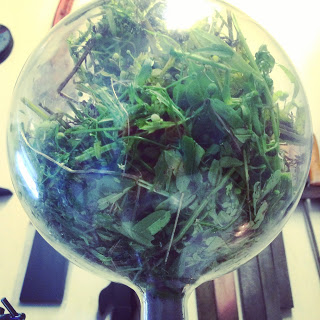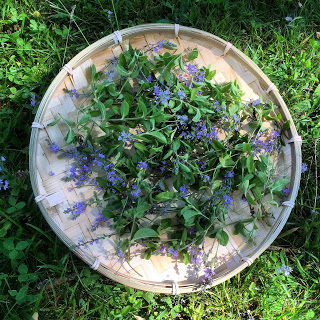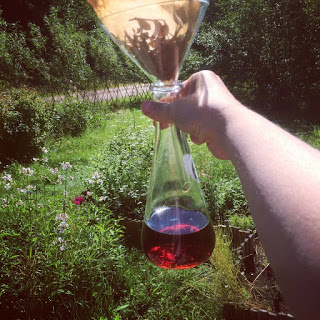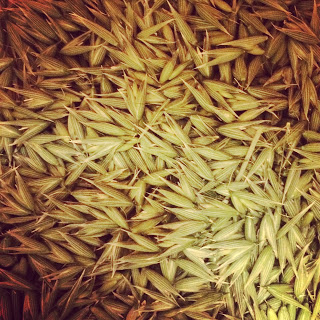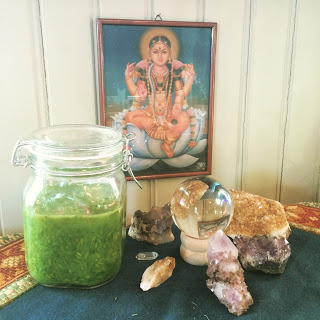Here is what my herbalism teacher Sajah Popham has to say about it:
Cleavers is a humble little woodland herb also known as bedstraw, for the Deer have been known to bed down in patches of it over night, giving it an animal correspondence (a common practice in Native American herbalism). The Deer type personality in people tends to be tall, thin, dry, nervous types (vata constitution in Ayurveda), with prominent joints. Cleavers also fits this description, and it is this constitution it is specific for. It is used in modern herbalism as a cooling and soothing diuretic, supporting a healthy inflammatory response in the kidneys and urinary tract. It has acts on the lymphatics, helping to decongest stagnation of the fluids. It is very nourishing and moistening to vata-deer types, and is also slightly grounding and nervine in its action.
Distilling Galium Aparine. Part of the Stop Smoking Support formula. Cleavers is a ‘deer medicine’, a category in Native American herbalism associated with the nerves. It is a great helper in the breaking of addictive patterns.
Maria Treben writes that Veronica (or Speedwell as it is called in english) growing under oaktrees are most potent and I have also come to this conclusion. The speedwell transformed into a spagyric tincture grew under a very old oaktree in my garden. It supports the respiratory tract and lungs but is also calming yet uplifting – very crown chakra. Look at the amazing color of the tincture of Veronica.
and rejuvenating. Ancient legend says that Gaia herself was weaned on the milk
of this flowering plant. Oats are the seeds and milky oats the flowering herb in
the milky stage.
impacts neurotransmitter activity in a way that is similar to nicotine.
The active ingredient, Lobeline, is a both a nicotine agonist and antagonist
derived from an Indian plant “lobelia inflata.” Here’s what that means:
neurotransmitter receptor cells that have been labeled ‘nicotinic’ receptors
because they are stimulated by nicotine. Lobeline acts on these cells as
an ‘agonist,’ which means that it binds to these cells and stimulates them in a
similar way to nicotine. (The effects are not as strong as nicotine,
however.) Because the drug is in effect ‘parked’ at the receptor sites on
these cells, it also partially blocks nicotine from activating them, thereby
reducing the effect of nicotine in the brain from smoking, and helping to
reduce the ‘reward’ associated with smoking.
unlike nicotine, which is highly addictive, lobeline does not appear to be
addictive. This may be because of its structural differences from
nicotine, and the different ways that it affects dopamine storage and
release. (Dopamine is another a neurotransmitter – one that is implicated
in addictive patterns of behavior.)
stimulating the release of dopamine in the normal way (from the presynaptic
terminal), lobeline appears to induce the metabolism of dopamine
intraneuronally as well as inhibit dopamine re-uptake. The result of this
is that rather than getting a ‘dose’ of rewarding dopamine immediately
connected to the behavior of smoking (or of taking lobeline), the dopamine
effect is more diffuse. So you still get the pleasant dopamine effect,
but because it is not strongly associated with the behavior, it does not induce
addictive behaviors, and in fact partially blocks the addictive effect of
nicotine intake.
Crooks PA., (2002) A novel mechanism of action and potential use for lobeline
as a treatment for psychostimulant abuse. Biochemical Pharmacology. Jan
15;63(2):89-98.
Havre i mjölkigt stadium/ Avena Sativa /Milky oats
Frossört/ Scutellaria galericulata /Skullcap
Lobelia Inflata
Sibirisk Ginseng/ Eleutherococcus senticosus /Siberian Ginseng
Snärjmåra/ Gallium Aparine /Cleavers
Organic alcohol
Hydrosol of Gallium Aparine
350 swedish krona + shipping
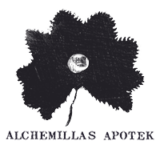
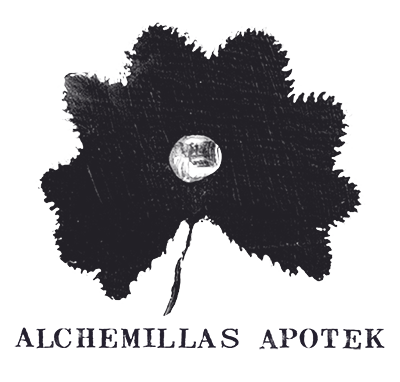

 English
English Svenska
Svenska